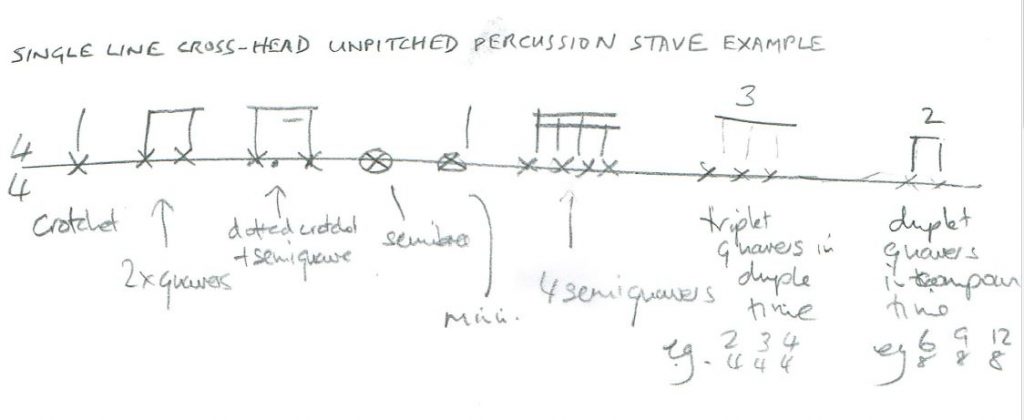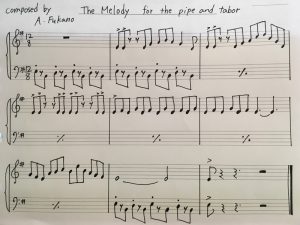2019 COMPETITION
The 2019 competition for new pipe and tabor compositions had 6 entries.
The winner was Kathryn Wheeler.
2019 ENTRIES –
The judges found good things in all the entries, and after due deliberation the 2019 winner is Fledgling Frustrations by Kathryn Wheeler.
Fledgling Frustrations Notes.doc
Fortunes 437 by Fiz Markham.pdf
Rascals Return by Barry Lloyd.pdf
Spanner in the Works by Clive DuMont.pdf
Spanner in the Works Notes.pdf
Spanner in the Works Field Town style arranged and played by Terry Carter.mp3
Trip Jig for D pipe by Simon Cook.pdf
Trip Jig recorded on G pipe.mp3
Whack-n-Wail by Clive DuMont.pdf
Whack-n-Wail Duet and Trio.pdf
2019 COMPETITION DESCRIPTION
The Taborers Society is keen to widen the appreciation of the pipe and tabor by challenging composers to produce a brief piece for members to memorise and play (2 to 3 minutes) in pdf and mp3, midi or Youtube format.
OUTLINE
Composers of any age, nationality or background are invited to compose a new piece for the pipe and tabor. The piece must be 2 to 3 minutes, with original material, for pipe and tabor (pipe in D, see Appendix A). The work is to be submitted as a pdf of the musical score with notation or instructions for taboring (in response to a 15/07/19 query see Appendix B – Instructions for Taboring Examples), and with an mp3 or midi file or video on Youtube of a performance, emailed to the competition email address
(Note: In response to a query, anyone who would like their composition to be anonymous from the judges’ perspective is very welcome to email their entry to Rob and Gillian Guest – to be forwarded as anonymous entries that can win the prize and have the composer announced after adjudication).
The work will be judged against the following criteria:
1. Audience enjoyment of the pipe and tabor in this piece.
2. Effective use of the pipe and tabor.
3. It should be possible for pipe and tabor players to memorise and play effectively at an event such as the International Pipe and Tabor Festival with pipes in D (see appendix A below).
Entries will be judged by a panel selected by officers of the Taborers Society. Panel members cannot enter the competition while they are on the panel.
HOW TO ENTER
Email a pdf of the musical score and a link to the YouTube video or an mp3 or midi file to the competition email address by 8 weeks before the festival (in 2019 this entry date is 19/07/2019). Please include in the email whether you plan to attend the festival if you win, and whether you and/or a friend could play it or direct members of the taborers society to play it at the festival.
At the discretion of the panel, a shortlist of videos, mp3s, midis and scores may be published on the web and / or Facebook.
The panel, whose decision is final, will notify entrants of the result by email and publish the results on the web by 3 weeks before the festival (in 2019 this results publication date is 23/08/2019).
THE PRIZE
The winner will have their piece performed or mp3, YouTube or midi played to members of the Taborers Society at the Pipe and Tabor Festival, and receive a certificate. If they are able to attend the festival to perform or direct performance of their piece, they will receive £100.
If they are unable to attend the festival, they will receive £50.
COPYRIGHT AND PERMISSIONS
• By submitting your composition, you grant the Taborers Society, free of charge, permission to use the work for performances and web based publicity including Facebook and YouTube, always credited to you.
• Copyright will remain with you and the aforementioned permission is non-exclusive.
• All entries, including composers’ details, may be used in publicity campaigns post competition.
• Any competitor under the age of 18 who wins the competition and travels to the Pipe and Tabor Festival must be accompanied by a responsible person aged over 18.
• The Taborers Society reserves the right to
1. cancel or adapt the competition if unforeseen circumstances arise
2. vary or change the prize details
3. disqualify any entrant who breaches the rules or who commits a fraud, at any stage.
• Entrants will be deemed to have accepted these rules and agree to be bound by them by entering the competition.
APPENDIX A – USING PIPES IN D
These are typical tabor pipes in high D, the commonest tabor pipe in the Taborers Society. These pipes are designed to play mainly in D major, G major, or E minor. Typically they are used to play notes in these scales from D to G, an octave and perfect fourth. The highest G is easiest and most effective played as a short stoccato note due to the characteristics of the instrument. The Taborers Society website gives details of how to obtain pipes, including the Generation high D pipe, a good instrument available at the time of writing for £9.95 for UK orders.
The tabor played with the pipe can vary in size and sound, but typically at a minimum can produce loud, soft or rim shot sounds.
APPENDIX B – INSTRUCTIONS FOR TABORING EXAMPLES
First A and B music –No taboringSubsequent A and B musics –All taborers improvise taboring, thinking of an Adderbury stick morris dance, with gradually increasing volume from quiet to loud
First A and B music –No taboringSecond A and B music –Half of taborers improvise with rim hits in A musicOther half of taborers improvise with quiet hits in B musicThird A and B music –One taborer improvises including a loud hit on first beat of each bar in A musicAll taborers improvise including a loud hit on first beat of each bar in B music
Bars 1 to 8 and 16 to 24 –Only a rim hit on the first beat of each barBars 9 to 15 –Quiet hit first beat of each bar, rim hit second, third and fourth beat of each barBars 25 to 32 –Loud hit first beat of each bar, quiet hit second and thirdAlso, it is permissable to include bars with no pipe playing.
Or if you want you can use percussion notation, a single line cross-head unpitched percussion stave example is shown here :

GOOD LUCK !
2016 COMPETITION
The 2016 competition for new pipe and tabor compositions had 5 entries.
The winner was Clive Du’Mont.
2016 ENTRIES – all inspiring in their different creative use of pipe and tabor:
Clive Du’Mont’s Winner –
Taborers’ Rally (full score)_200716
Tony Pearson –
Taborers’ Rag
Taborers’ Rag with drum
Taborers Rag with drum
Christopher Walker –
Christopher Walker – Y daith i Harlech
Fiz Markham –
Fiz Markham – Seven+Flat+-+Full+Score
Fiz Markham – Seven+Flat
Fiz Markham – Seven+Flat+-+Lead+Tabor+Pipe+in+D,+Tabor
Fiz Markham – Seven+Flat+-+Accompanying+Tabor+Pipe+in+D,+Tabor
Fiz Markham – Seven+Flat+-+2nd+Lead+Tabor+Pipe+in+D+(Can+be+a+low+D),+Tabor

